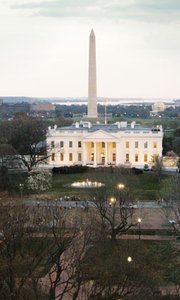AAFA Summit Highlights Trends and Challenges in the Apparel and Retail Field
WASHINGTON, D.C.—For apparel and footwear makers, China is still the place to be even though Chinese wages are expected to double in the next five years.
“The new China seems to be interior China,” said Edwin Keh, who, until two years ago, was chief operating officer and senior vice president of Wal-Mart global procurement. “Southeast Asia is a reluctant alternative to China. Basically, everyone is testing a China-plus-one strategy.”
Keh was one of several speakers at the annual American Apparel & Footwear Association meeting, held
March 14–16 at the Four Seasons in Georgetown.
The more than 170 attendees represented companies such as Byer California, Jockey International, Williamson-Dickie Manufacturing Co., Kellwood Co., American & Efird Inc., FesslerUSA, VF Corp., Ann Inc. and Coats America.
Sourcing was just one of the many subjects covered during the three-day meeting. Other topics included retail innovation, trade policy, risk management and global economics.
As much as China has been getting a bad rap lately for cost increases at factories, companies still are keeping a good share of their production there. “Once you get away from Dongguan and Shenzhen [in southern coastal China], the rest of China is pretty competitive,” said Rick Darling, president of Li & Fung USA, an apparel, accessories and home décor sourcing company that manufactures clothing in China and other countries for retailers such as Macy’s, Kohl’s and Wal-Mart. “There is a long way to go before you think that China is not competitive.”
The Chinese government is urging apparel factories to relocate to the less developed and less expensive areas of China that are in the north and west of the country.
Darling noted that the more expensive garment factories in China will be used by higher-priced labels while lower-priced products will be shifting to the interior of China as well as to Indonesia, Bangladesh, Jordan and Egypt.
Rick Helfenbein, president of Luen Thai USA, another large sourcing company, agreed that China is still a major player for U.S. apparel companies.“China is still the best place to produce,” he noted. “The Philippines and Cambodia are in the middle-price range, and Burma is the new frontier.”
Burma, now called Myanmar, has been off-limits to any kind of trade with the United States because of that country’s repressive military government that ruled from 1962 to 2011. The military junta was dissolved last year following a general election in 2010 that led the way to install a civilian government. On April 1, more elections are being held for 48 of 600 seats in Myanmar’s parliament. Western observers have said a fair election is key to lifting economic sanctions against that country.
China is still the No.1 apparel maker for U.S. retailers, providing 40 percent of all apparel sold in the United States. That will continue for at least the next five years, Wal-Mart’s Keh said.
Anyone not already in Vietnam, the No. 2 provider of apparel to the United States, won’t be going there soon because the factories are working at capacity, Keh said. Central and South America will become more important for quick-turn items and replenishment.
Keh, who now is a lecturer at the Wharton business school at the University of Pennsylvania, noted that manufacturers need to make a list of pros and cons for manufacturing in each country and then check them regularly. China is still popular because it offers a relatively stable currency, a skilled and abundant labor force, a stable government, good logistics, an excellent supply of raw materials, and a favorable investment climate.
The formula for successful sourcing includes peer-to-peer relationships, setting measurable goals and information transparency. “You have to build partnerships where everyone has a say in what goes on in the supply chain, which is different from what we grew up with, when the customer drove the agenda and everyone else fell along,” he said.
Keh recalled his first day on the job at Wal-Mart, when he had to address the problem of an exploding microwave sold in England. “We were trying to sell the world’s most affordable microwave for students and poor households. It would be able to heat beverages and quick meals and cost no more than $35,” Keh recalled.
The factory didn’t communicate that it was going to take out an electronic timer and put in a mechanical egg timer–like device to reduce costs. But if you used your microwave a lot, the timer got stuck, which kept the appliance on indefinitely, leading to an explosion.
“My point is that there are no villains here. No one went out to do a bad job. But because we didn’t understand the goals and objectives, we made mistakes,” Keh said.
Rethinking retail
There are so many facets to retailing these days that merchants have to be innovative and communicate more with their customers. Selling direct to the consumer is critical because social media and the Internet are expanding at lightning speed. “Ten years ago, the Internet accounted for 4 percent of total purchases,” said Marshal Cohen, chief retail-industry analyst at research company The NPD Group Inc. “Today it is over 16 percent. Tablets and phones are at 4 percent.”
New traditions are being implemented all the time to boost sales. One of these new traditions is opening store doors in the middle of the night right after Thanksgiving Day. “The stores that opened up early gained up to 22 percent more business because of it. Those who didn’t lost up to 8 percent,” Cohen said. “It is all about sealing the deal.”
Another new tradition this past holiday season was promoting the idea of self-gifting. Ann Taylor stores touted the idea during the post-Thanksgiving weekend by taking out an ad about treating yourself to a gift because everything was
40 percent off. “Forty-four percent of consumers said they bought something for themselves this year,” Cohen observed. “It has never been greater than 26 percent.”
Also, consumers are no longer making low prices their top priority. This year they want to see brand names for less, Cohen said.
Innovation is a daily challenge at The Disney Co. Johnnie Rush, vice president of global retail, product design and development, said he and his team are constantly on the prowl for unique ideas. “Innovation is a big deal for Disney,” he said.
In a way, Disney has a locked-in market with the millions of people who visit the company’s theme parks and are familiar with the Disney characters, some of which date back to the 1920s.
But Disney is constantly thinking of new ways to market those characters and the Disney experience. Rush’s team is working on several new concepts. They are developing a retail store inside the theme parks where you can walk in, decide to buy an item and leave without visiting a cash register.Instead, the ticket tag hanging around your neck will act as your credit card, which will be automatically charged.
Disney is planning to launch retail trucks, much like food trucks, for its products that include the D-Tech, Vinylmation and Duffy labels. Instead of bringing the customer to the product, they will bring the product to the customer.
Other ideas in the works include a makeup store and spa, perhaps in collaboration with Estée Lauder and Mac, to sell cosmetics with colors based on Disney characters.
Disney is also developing more upscale adult lifestyle brands, such as the Walt Disney Signature brand, that have hints of Disney memorabilia. For example, a throw pillow’s fabric would have a subtle glass-slipper design.
The key to all these design ideas is this: “Design stuff that you want to buy, as silly as that sounds,” Rush said, “instead of what you think your customers want.”

























